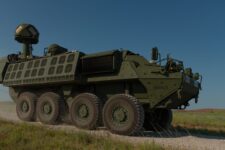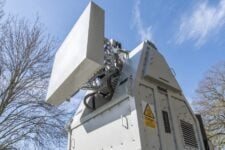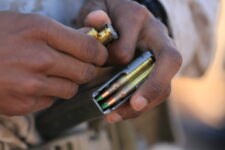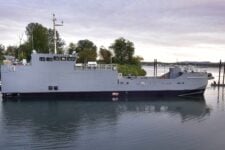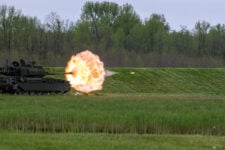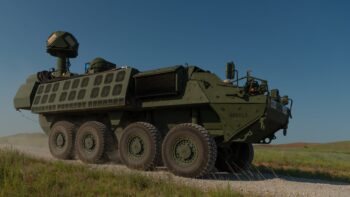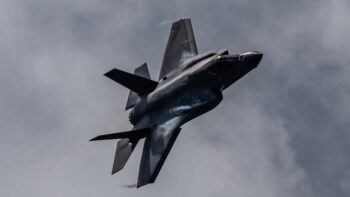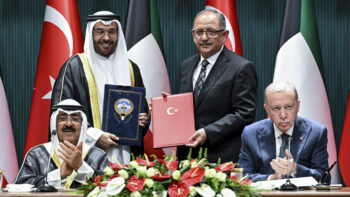
The Army’s latest concept for its new long-range electronic warfare and signals intelligence system, TLS-EAB
WASHINGTON: In late 2024, the Army’s experimental Multi-Domain Task Force will get the ability to spy on enemy networks in peacetime and to take them down in war.
It’s known ponderously as Terrestrial Layer System – Echelons Above Brigade (TLS-EAB), because it ultimately aims to provide long-range cyber/electronic warfare and signals intelligence to all Army divisions and corps, the “echelons above brigade.” (A shorter-range version, TLS-BCT, is being developed for brigade combat teams, part of a wider push to revive Army electronic warfare). But the system’s top priority is the Multi-Domain Task Force, which will also receive hypersonic weapons and other long-range missiles in 2023: The goal is to disable enemy forces with a potent one-two punch of electronic and physical attacks.
Army acquisition officials from PEO-Intelligence & Electronic Warfare Systems are already working with the Multi-Domain Task Force on what the MDTF needs, said TLS-EAB program lead Kevin Wilson. One of the more striking concepts under consideration – not yet formally approved, let alone funded – is for high-altitude balloons to enable antennas to see and transmit far beyond the horizon. “I don’t know if we need to get that high,” Wilson said, but he “wouldn’t rule it out.”
TLS-EAB and other Army electronic warfare systems are being designed to operate on their own if need be. For example, when communications are cut off by enemy jamming. But, said Wilson’s boss, Col. Kevin Finch, “the real magic happens” when they can connect to long-range communications and “take advantage of national capabilities,” for example by working together with Cyber Command’s Cyber Mission Force.
At the AOC CEMA conference this week, Army officials laid out an ambitious timeline for TLS-EAB, even as they acknowledged some schedule slippage and uncertainty about long-term funding amidst tightening budgets:
- The Army will put out a draft Request For White Papers via the public-private C5 Consortium in June; the final version of the request will come out in July.
- The Army Requirements Oversight Council is expected meet to approve the program’s formal requirements on July 9, more than a month later than originally anticipated, Wilson said. That will force some schedule adjustments yet to be determined.
- In late 2022, the Army plans to award an Other Transaction Authority (OTA) contract for rapid prototyping – the hope is to have two competing industry teams. That will be followed by extensive work with the Multi-Domain Task Force to get soldier feedback on what they want and what works best.
- In 2024, the Army wants to downselect to a single vendor and begin limited production, enough to equip the Multi-Domain Task Force by the fall. Larger-scale production for other units would follow.
The initial version fielded to the Pacific-focused MDTF will be upgraded and expanded as TLS-EAB is fielded to other forces in other places. The goal, Finch and Wilson said, is continuous improvement to keep up with rapidly advancing technology and evolving threats. Such rapid upgrades, in turn, require the use of so-called modular open systems architecture and shared technical standards – like the Army’s CMOSS – to allow the Army to plug-and-play new upgrades from the best available vendor, rather than traditional proprietary standards that “lock” the Army into dealing with one company for the life of the program.
Army soldiers not impressed with Strykers outfitted with 50-kilowatt lasers, service official says
“They will tell you everything and they’re not worried about your feelings,” said Doug Bush.
